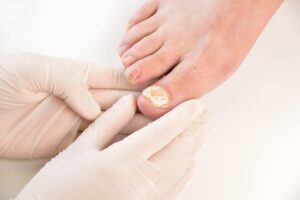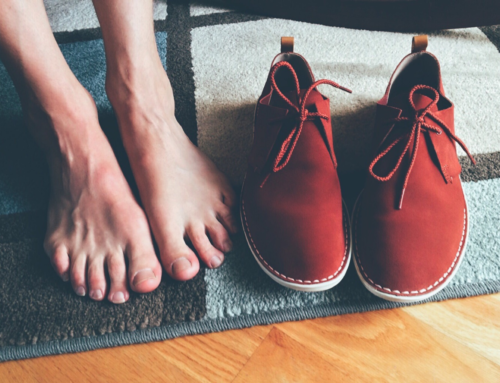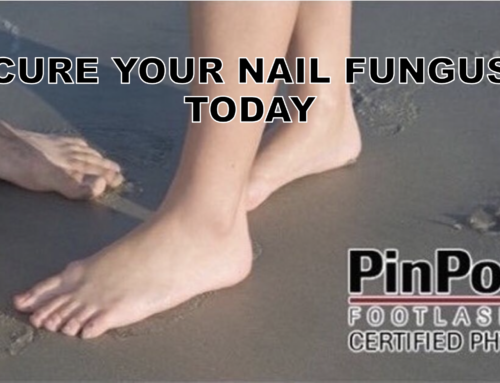Locker rooms are convenient spaces for athletes, gym-goers, and swimmers—but they can also be one of the most common places to catch toenail fungus. Because toenail fungus is highly contagious, it can easily spread when people share the same damp environments without proper protection. Many people don’t realize that simply walking barefoot across a locker room floor can expose them to fungal spores that latch onto the skin and nails.
Toenail fungus often spreads silently at first, so you may not notice the infection until your nails become discolored, thickened, or brittle. If you use locker rooms regularly, understanding the risks and knowing how to protect yourself can help you avoid dealing with this frustrating condition.
Why Locker Rooms Are High-Risk
Fungi thrive in warm, moist, and dark environments, which makes locker rooms the perfect breeding ground. After workouts, games, or swimming sessions, locker rooms are often filled with sweaty feet, damp towels, and wet floors—exactly the type of environment fungus loves.
A few reasons locker rooms are especially risky include:
-
Bare feet on shared surfaces: Many people walk barefoot from showers to lockers or benches. If even one person has a fungal infection, spores can spread onto the floor.
-
Moisture build-up: With constant water exposure from showers and pools, floors and mats rarely stay completely dry.
-
High foot traffic: Athletes and gym-goers come and go all day, increasing the chances that someone with fungus is leaving spores behind.
-
Shared gear or towels: Using another person’s towel, socks, or shoes—common in team environments—can also spread the infection.
This is why athletes, swimmers, and anyone who frequents gyms are at a higher risk for toenail fungus. The more time your bare feet spend in locker rooms, the greater the chance of exposure.
How Toenail Fungus Spreads
Toenail fungus, also called onychomycosis, doesn’t require direct skin-to-skin contact to spread. Instead, the infection typically begins when fungal spores land on surfaces and then come into contact with a new host. For example:
-
A person with toenail fungus showers barefoot, leaving behind fungal spores.
-
The next person walks across the same area with bare feet.
-
The spores enter through small cracks in the skin or nail, beginning an infection.
Fungus can survive for long periods on surfaces like floors, benches, or mats, waiting for the next bare foot to pass by. Once it takes hold, the fungus grows inside the nail bed, making it very difficult to treat without medical help.
Signs You May Have Picked Up Toenail Fungus
If you spend a lot of time in locker rooms, it’s important to watch for early warning signs of infection. Toenail fungus often starts subtly but worsens over time. Common symptoms include:
-
Yellow, brown, or white discoloration in the nail
-
Nails that become unusually thick or hard
-
Crumbly or brittle nail edges
-
A foul odor is coming from the nail
-
Pain or pressure when wearing shoes
Catching the infection early can make treatment easier and more effective.

How to Protect Yourself in Locker Rooms
The good news is that you can greatly reduce your risk of toenail fungus by taking simple precautions every time you use a locker room.
-
Always wear shower shoes or sandals: Flip-flops or waterproof slides act as a protective barrier between your feet and the floor.
-
Keep your feet dry: Dry thoroughly after showering, especially between your toes. Fungi thrive in moisture.
-
Avoid sharing towels, socks, or shoes: Even with close friends or teammates, sharing increases your risk.
-
Use antifungal powders or sprays: Applying them before and after locker room visits adds an extra layer of protection.
-
Bring your own mat: If you do floor stretches or yoga in the locker room, place your own mat between you and the ground.
By sticking to these habits, you can significantly cut your risk of infection.
Why Athletes Face Higher Risk
Athletes often sweat more, spend more time in locker rooms, and share equipment or facilities, which explains why fungal infections are so common in sports teams. Constant pressure and friction from shoes also create tiny breaks in the skin around the nails, giving fungus an easy entry point.
Because athletes can’t always avoid locker rooms, prevention strategies like wearing sandals and keeping gear clean are especially important.
What to Do if You Already Have Toenail Fungus
If you notice thick, discolored, or painful nails, it’s time to see a licensed podiatrist. Over-the-counter creams rarely work because they don’t penetrate the nail deeply enough. Medical treatments are much more effective.
PinPointe Laser Treatment
Our nail doctor in Austin, TX, recommends the PinPointe Laser treatment as the most effective option for toenail fungus. Unlike topical creams or oral medications, the PinPointe laser targets the fungus directly beneath the nail surface.
Here’s why patients prefer it:
-
High cure rate: It outperforms other treatments.
-
Safe and painless: No side effects, needles, or anesthesia.
-
One session: Most patients only need one treatment.
-
No downtime: You can resume your regular activities immediately after the procedure.
This FDA-approved treatment is performed only by licensed podiatrists, so you know you’re getting expert care.
Final Thoughts
Locker rooms are convenient, but they also pose a real risk for toenail fungus. With so many people walking around barefoot in damp, enclosed spaces, it’s no surprise these environments become hotbeds for fungal infections. By taking preventive steps—like wearing sandals, keeping your feet dry, and avoiding shared gear—you can protect yourself from this stubborn condition.
And if you already suspect you have toenail fungus, don’t rely on temporary fixes or home remedies. Professional treatment, like the PinPointe laser, offers a safe and lasting solution.
To schedule a consultation with a licensed podiatrist near you, call 1-(800) 672-0625 or visit our website today. Don’t let toenail fungus keep spreading—take action now and enjoy clear, healthy nails again.




